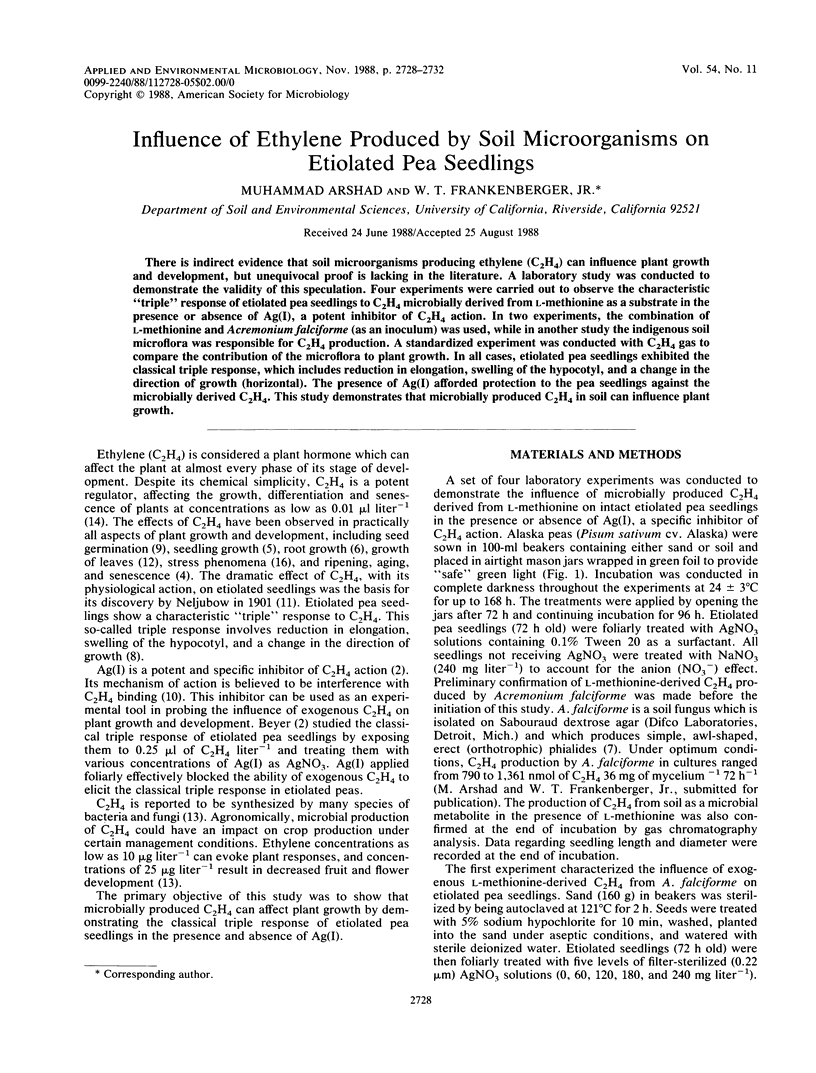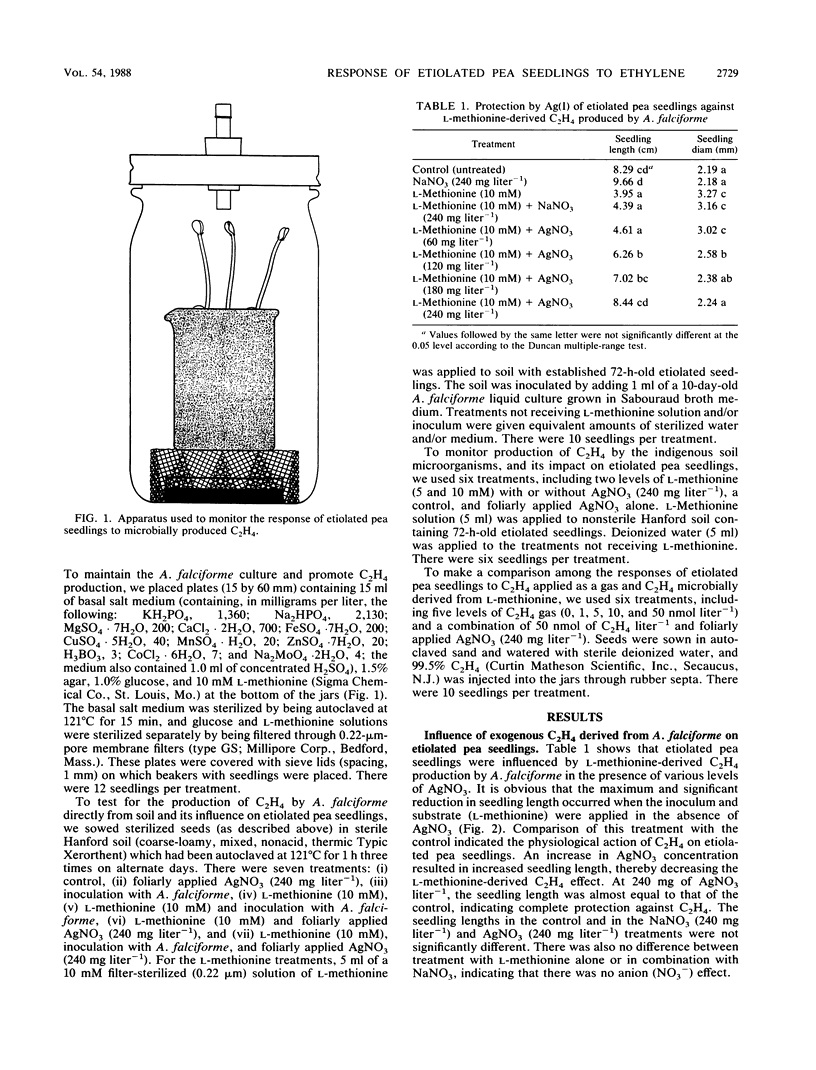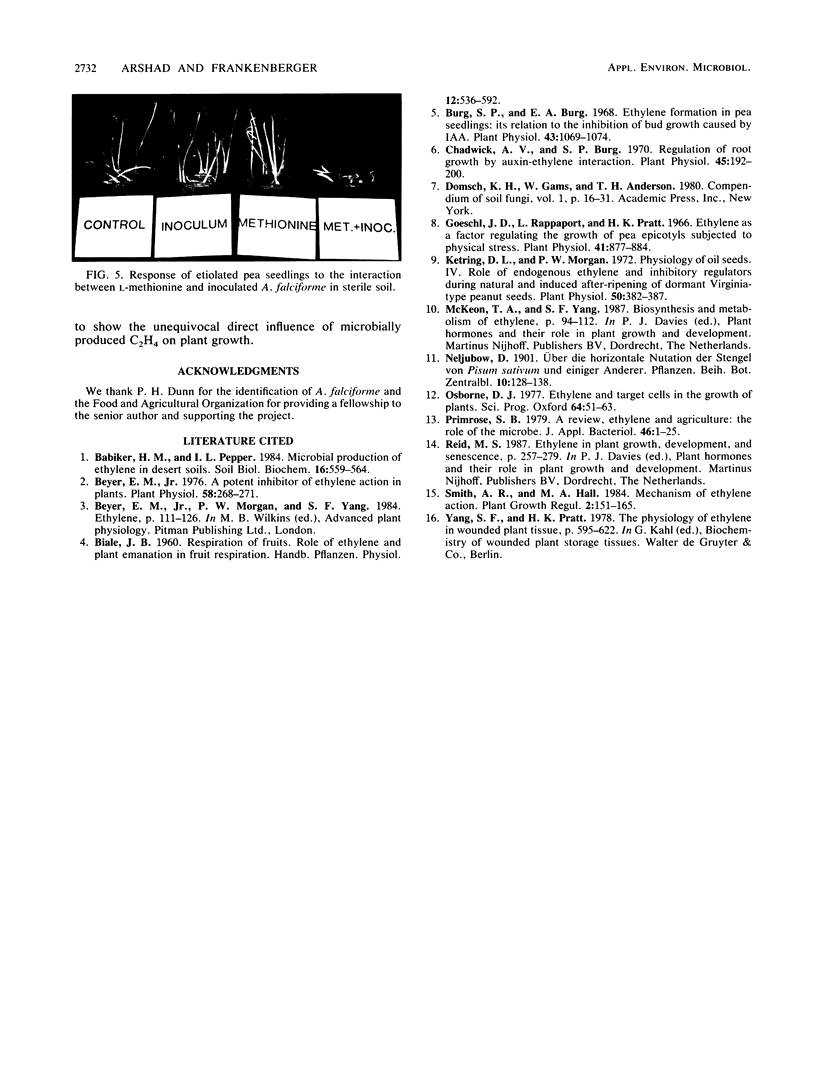Abstract
There is indirect evidence that soil microorganisms producing ethylene (C2H4) can influence plant growth and development, but unequivocal proof is lacking in the literature. A laboratory study was conducted to demonstrate the validity of this speculation. Four experiments were carried out to observe the characteristic “triple” response of etiolated pea seedlings to C2H4 microbially derived from l-methionine as a substrate in the presence or absence of Ag(I), a potent inhibitor of C2H4 action. In two experiments, the combination of l-methionine and Acremonium falciforme (as an inoculum) was used, while in another study the indigenous soil microflora was responsible for C2H4 production. A standardized experiment was conducted with C2H4 gas to compare the contribution of the microflora to plant growth. In all cases, etiolated pea seedlings exhibited the classical triple response, which includes reduction in elongation, swelling of the hypocotyl, and a change in the direction of growth (horizontal). The presence of Ag(I) afforded protection to the pea seedlings against the microbially derived C2H4. This study demonstrates that microbially produced C2H4 in soil can influence plant growth.
Full text
PDF




Images in this article
Selected References
These references are in PubMed. This may not be the complete list of references from this article.
- Beyer E. M. A potent inhibitor of ethylene action in plants. Plant Physiol. 1976 Sep;58(3):268–271. doi: 10.1104/pp.58.3.268. [DOI] [PMC free article] [PubMed] [Google Scholar]
- Burg S. P., Burg E. A. Ethylene formation in pea seedlings; its relation to the inhibition of bud growth caused by indole-3-acetic Acid. Plant Physiol. 1968 Jul;43(7):1069–1074. doi: 10.1104/pp.43.7.1069. [DOI] [PMC free article] [PubMed] [Google Scholar]
- Chadwick A. V., Burg S. P. Regulation of root growth by auxin-ethylene interaction. Plant Physiol. 1970 Feb;45(2):192–200. doi: 10.1104/pp.45.2.192. [DOI] [PMC free article] [PubMed] [Google Scholar]
- Goeschl J. D., Rappaport L., Pratt H. K. Ethylene as a factor regulating the growth of pea epicotyls subjected to physical stress. Plant Physiol. 1966 May;41(5):877–884. doi: 10.1104/pp.41.5.877. [DOI] [PMC free article] [PubMed] [Google Scholar]
- Ketring D. L., Morgan P. W. Physiology of Oil Seeds: IV. Role of Endogenous Ethylene and Inhibitory Regulators during Natural and Induced Afterripening of Dormant Virginia-type Peanut Seeds. Plant Physiol. 1972 Sep;50(3):382–387. doi: 10.1104/pp.50.3.382. [DOI] [PMC free article] [PubMed] [Google Scholar]






